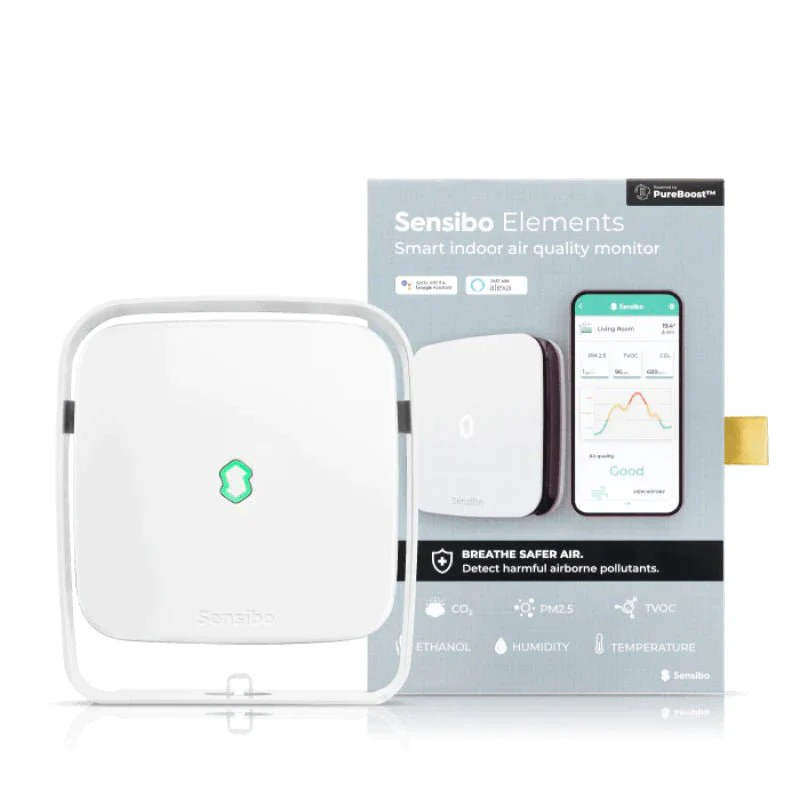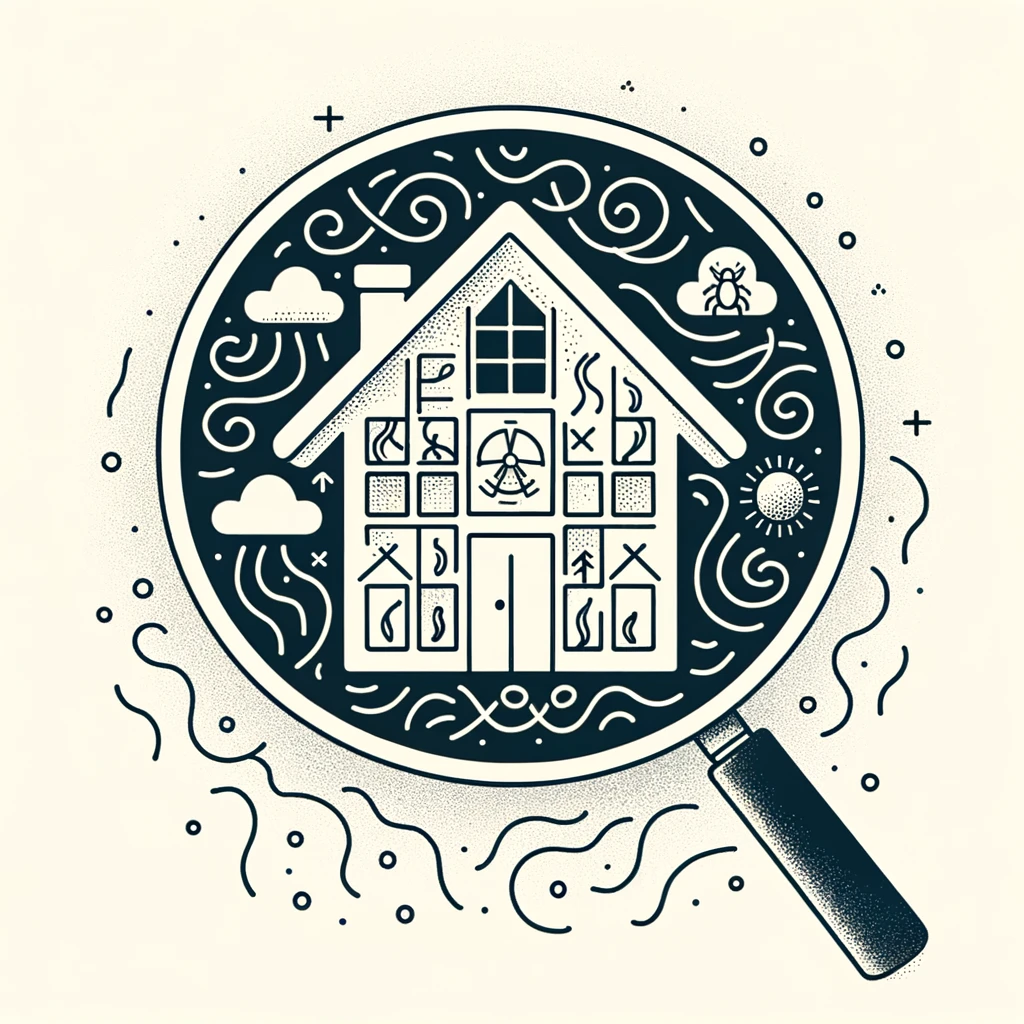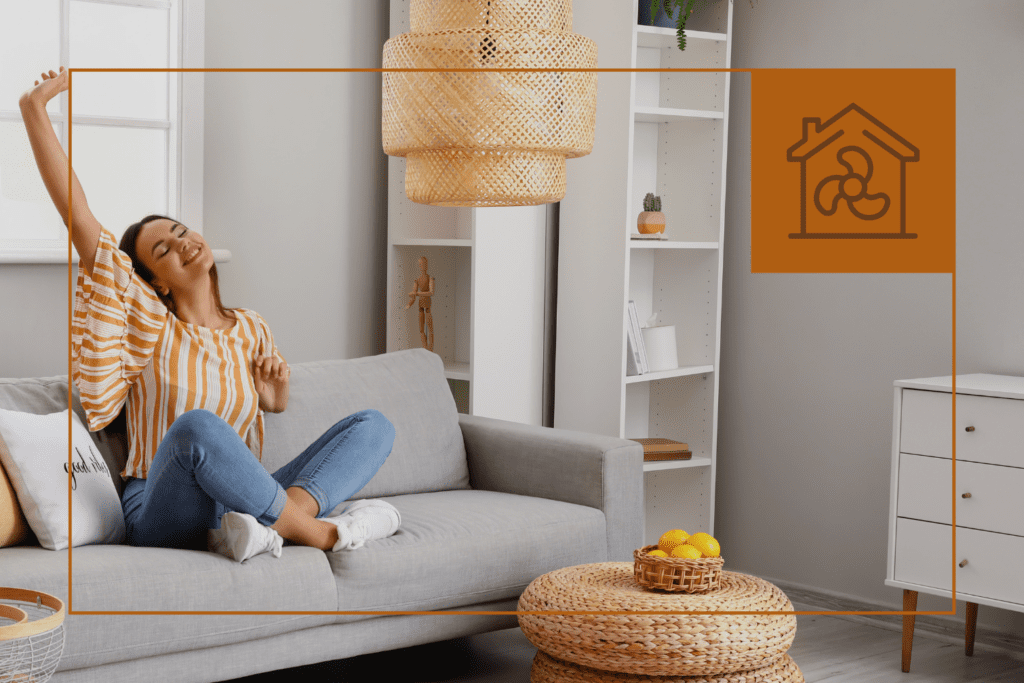Indoor air pollution is a silent global health crisis, with the World Health Organization attributing an estimated 3.2 million deaths to it in 2020, including a staggering number of young children.
Despite its invisibility and often odorless nature, the long-term health effects of common indoor pollutants like radon and VOCs are profound and can be significantly detrimental to our well-being.
1. Poor Ventilation
With modern homes being tightly sealed, poor ventilation has become a critical threat to indoor air quality. Without adequate airflow, pollutants can reach levels up to 5x higher than outdoors.
You can combat poor ventilation by:
- Installing exhaust fans in kitchens and bathrooms to expel impure air
- Using air purifiers with HEPA filters to capture fine particles
- Leveraging smart home systems to monitor and improve air quality
- Opening windows and doors when the weather outside allows
- Adding mechanical ventilation to your home’s existing HVAC system
2. VOCs: The Chemical Hazards
Volatile organic compounds, commonly found in paints, solvents, and cleaning products, can cause a range of health issues from eye irritation to more serious conditions like cancer. The EPA’s overview on VOCs highlights the importance of minimizing exposure to these chemicals.
To minimize VOC exposure:
- Choose low-VOC products for home improvement and cleaning
- Ensure proper ventilation when using products that emit VOCs
- Regularly replace air filters to capture airborne chemicals
3. Radon: The Stealthy Carcinogen
Radon, a radioactive gas and the second leading cause of lung cancer in non-smokers in the U.S., can seep undetected into homes. Testing for radon is essential, as high levels require mitigation systems to reduce risk.
Mitigate your radon risk:
- Test your home with a radon kit available at hardware stores
- Seal cracks in your home’s foundation to prevent radon infiltration
- Consult professionals for radon mitigation if necessary
4. Carbon Monoxide: The Odorless Killer
Carbon monoxide, a byproduct of combustion, is a colorless, odorless gas that can lead to poisoning and death. Ensuring your home is equipped with carbon monoxide detectors and that combustion appliances are well-maintained is crucial.
To prevent carbon monoxide poisoning:
- Install carbon monoxide detectors in sleeping areas
- Have heating systems inspected annually
- Never use combustion appliances indoors without proper venting
These measures are vital for preventing the potentially fatal consequences of carbon monoxide exposure.
5. Particulate Matter: The Microscopic Menace
Particulate matter, a mix of tiny particles and droplets, can penetrate deep into the lungs and even enter the bloodstream, causing respiratory issues and cardiovascular problems.
Reduce your exposure to particulate matter by:
- Avoiding indoor smoking and limit the use of candles and fireplaces
- Using air purifiers to filter out particulate matter
- Keeping your living space clean to reduce dust and allergens
6. Excessive Humidity and Mold
High humidity levels can foster mold growth, which releases spores and toxins into the air. Maintaining a balanced indoor humidity level is essential for preventing mold and ensuring good air quality.
Control humidity and combat mold:
- Use dehumidifiers in damp areas of your home
- Repair leaks promptly to prevent moisture accumulation
- Inspect for mold regularly and clean with mold-killing products
7. Inefficient HVAC Systems
HVAC systems can circulate dust, pollen, and other allergens throughout your home if not properly maintained. Regular maintenance and filter changes are necessary to ensure they contribute to clean air rather than polluting it.
To maintain HVAC efficiency:
- Change HVAC filters every 1-3 months
- Schedule professional maintenance checks yearly
- Consider duct cleaning to remove dust buildup
A well-maintained HVAC system is integral to sustaining clean indoor air and reducing allergen exposure.
Recent studies, including a 2022 EPA report, show that while indoor air quality has improved, it varies greatly depending on location and individual homes.
Additionally, the American Lung Association’s 2023 study indicates that indoor air pollution is a significant issue in schools, affecting the health of millions of children. These findings underscore the importance of taking personal action to ensure the air we breathe indoors is as clean as possible.
By understanding and addressing these seven threats, millennials can take charge of their indoor air quality, creating a healthier home environment that supports their well-being and that of future generations.





